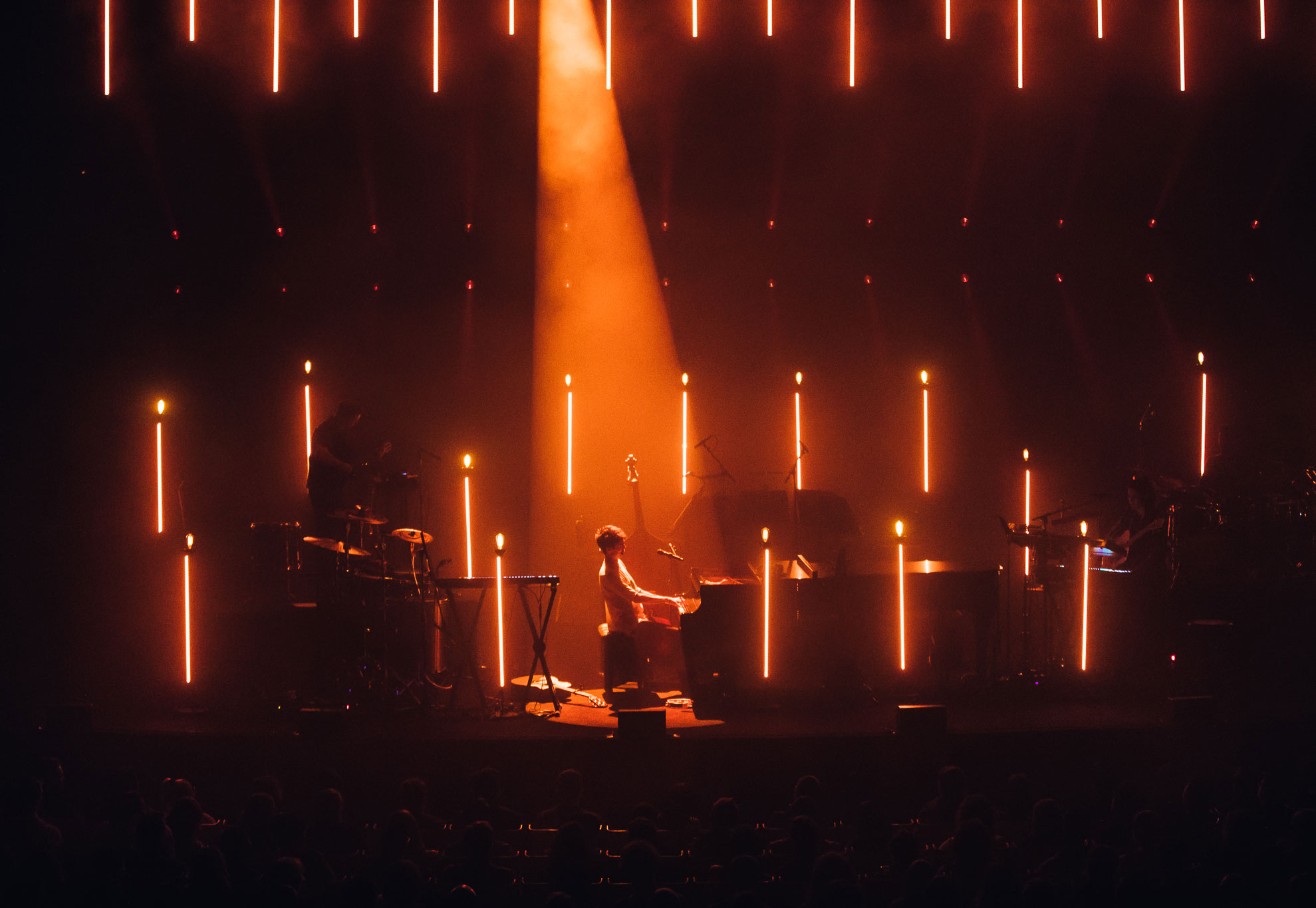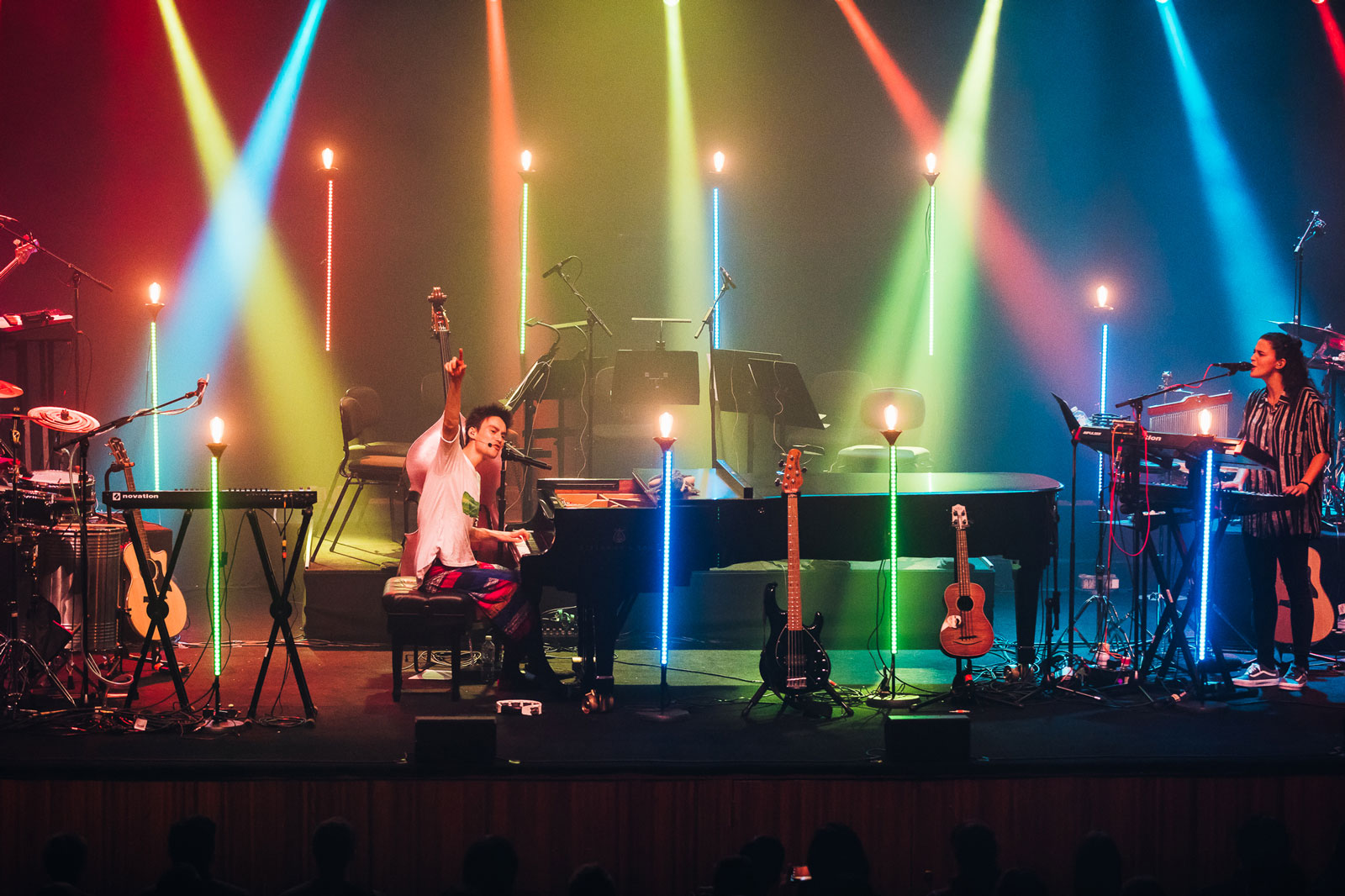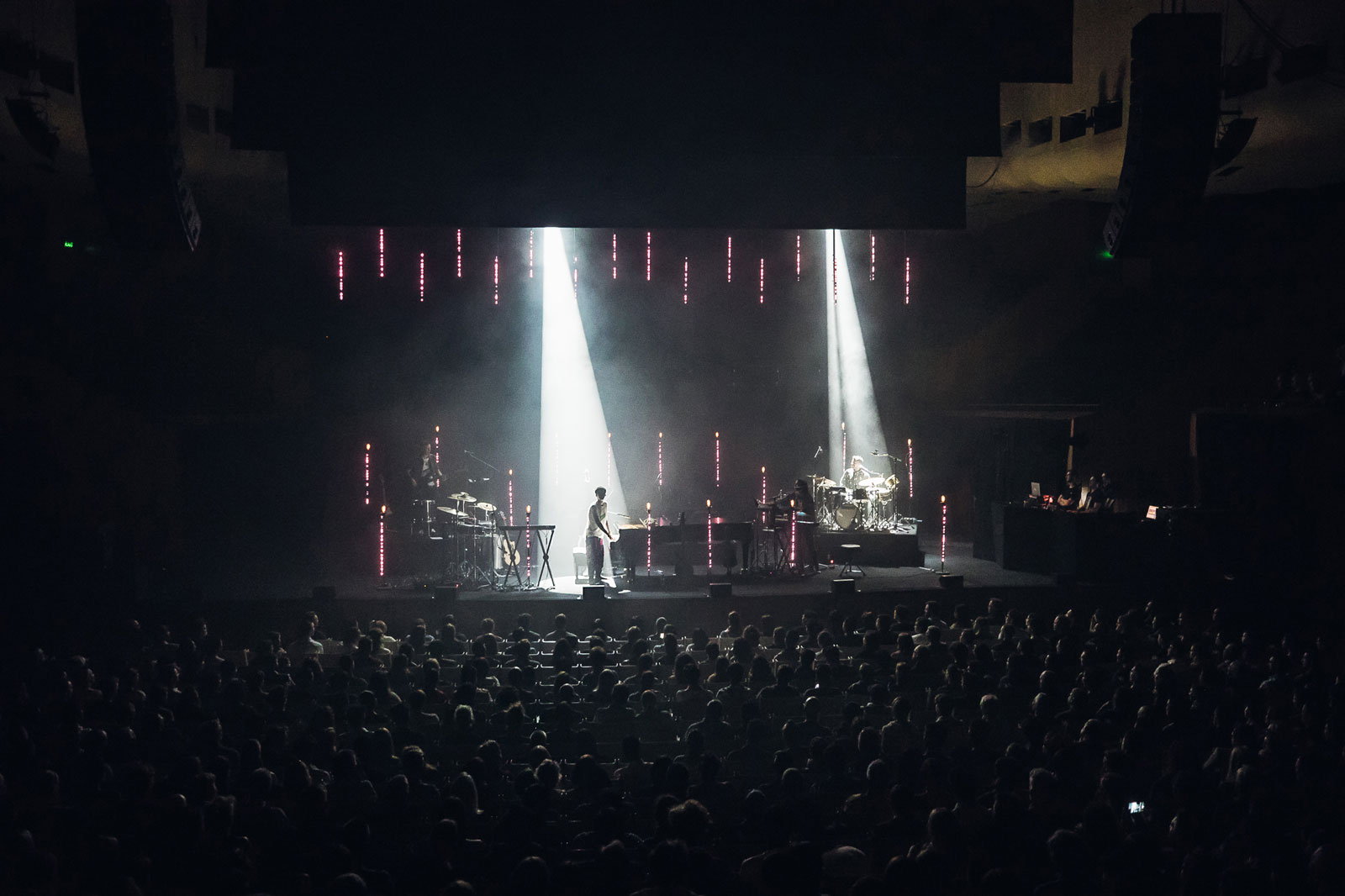Luke Edwards – Patterns in Light
Posted on December 3, 2019
Photo: Jordan Munns
Like some mesmerizing pantomimist who captivates with fluid, silent gestures, lighting can, when artfully choreographed, immerse the sense by creating a dynamic tapestry of shapes and patterns on stage.
Luke Edwards has channeled this transformative power of light in recent designs for clients like Jacob Collier and Gary Numan. Eschewing big, sweeping movements, he has instead deftly arranged lighting elements in beguiling configurations that draw in audiences without ever straying from the primary mission of supporting his client’s performance.
By making even slight changes to his scenic patterns, Edwards reveals new dimensions of an unfolding light narrative that evolves in sync with the music. Sometimes, this story-telling element is grounded in literal symbolism; at others, it takes a more subtle evocative turn. Either way it flows seamlessly with the music to create a complete multi-sensory experience.
The owner of Cue Design in London, Edwards spoke to us about the transformative power of creating patterns in light.
In many of your designs, you use some of your lights as scenic elements, intending them to be looked at, rather than using them to illuminate the artist or crowd. Why is this scenic element so important to you as a designer?
“For me light is beautiful and in some instances it really is appropriate for it to be seen. Also as we move to the wonderful world of Instagram etcetera, the shows need to look very different from other artists as everything goes online straight away, so there is more room for people to compare and to be critical.”

Photo: Jordan Munns
So, is it fair to say you design these light patterns with the idea that the show will be videoed?
“Absolutely, everything in lighting now is lighting for live TV, as so many people get there phone out and live stream the gig as it is happening.
Creating scenic patterns with light endows your designs with a theatrical element. Yet, these are concerts you’re lighting. How do you create the concert flavor without detracting from the theatrical element of your design?
“I love taking elements from different disciplines and putting them together. Yes its rock or pop, but for me, artists performing on a stage is still very theatrical and emotional. This is something we try and reflect in our designs.”
For the recent Jacob Collier tour you arranged LED bars with Edison lamps on top to symbolize your client’s bridging of old and new music technologies. Do the scenes you create always have to mean something literal, or can they also be evocative of a mood in more abstract terms?
“A bit of both. Sometimes its obvious. For Jacob’s lyric “down falling down” it seemed a bit silly having lights moving upwards. In other more subtle and acoustic songs, it’s more about creating a mood and environment for the music to be performed in.”
The patterns you created on stage for Jacob Collier were free flowing. In other words, there was no regular order to how you positioned those strips and bulbs. Why did you arranged them ‘randomly’ rather than in a structured order?
“It was to symbolize the randomness of the Jazz element in Jacob’s music – and also how everything is free flowing. Music doesn’t always have to be by the rules. Same way lighting doesn’t!”

Photo: Jordan Munns
On Gary Numan’s “Savage” tour, you broke up your video wall with patterns of strip lights. Why do this, rather than have one solid video wall? What element did this add to the design?
“The album was about a broken world and for me the broken up video panels where windows and portals into this broken world.”
Do you think tour designs in general are becoming more theatrical, with more set piece patterns defining the stage?
“Absolutely, everybody wants that one scenic element now that is instantly recognizable in an online picture. Also more and more tours are bringing scenic, lighting elements and merchandise together. The aim is to create a story from when you walk in, to when you go to the merch stand, to when you go home.”
People in the audience who view your scenic designs will see a different pattern depending on where they’re sitting. How do you account for these different perspectives when you design?
“It’s more during show days, walking the venue and checking viewing angles and adjusting accordingly.”
How does the size of the venue influence the type of design you create? Would an arena be too large for the kind of pattern design you did for Jacob Collier?
“In its current config absolutely. But take the same concept and change the lights for example and it could work. I think if we were in an arena then I would use the current configuration for a B stage. Glowing Edison bulbs still look really good on IMAG.”
Any advice for LDs who are adding more scenic elements to their designs?
“Be brave try something different and the only way to learn is to experiment.”